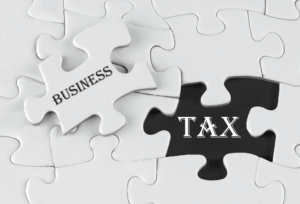
If a high volume company purchases $40,000 of goods, its cost will be $28,000 ($40,000 X 70%). To comply with the cost principle the company will debit Purchases (or Inventory) for $28,000 and will credit Accounts Payable for $28,000. Crediting discount received has the effect of reducing gross purchases by the amount of cash discount received. Consequently, payables are debited to reduce their balance to the amount that is expected to be paid to them, i.e. net of cash discount.

Journal entry accounting
- Bike LTD purchases a bike from BMX LTD and pays within 10 days of the date of purchase.
- This entry increases inventory (an asset account), and increases accounts payable (a liability account).
- Meanwhile, liabilities, revenue, and equity are decreased with debit and increased with credit.
- The use of discounts can have a significant impact on cash flow, particularly when discounts are used as a form of cost savings.
- When learning bookkeeping basics, it’s helpful to look through examples of debit and credit accounting for various transactions.
- When a business purchases goods on credit from a supplier the terms will stipulate the date on which the amount outstanding is to be paid.
- This purchase discount of $60 will be offset with the purchase account and be cleared to zero at the end of the accounting period.
For every transaction, you’ll need to record both a debit and a corresponding credit in two different accounts. For example, when you buy inventory, you’ll debit your inventory account and credit your cash or accounts payable account. Ultimately, this system helps keep your books balanced and helps make sure nothing slips through the cracks.
- In general, debit accounts include assets and cash, while credit accounts include equity, liabilities, and revenue.
- You’ll notice that the function of debits and credits are the exact opposite of one another.
- Ultimately, purchase discounts can have a positive impact on a company’s cash flow by improving its liquidity.
- The early payment discount is also referred to as a purchase discount or cash discount.
- However, in the net method, we record the purchase transaction at the net amount assuming that the payment would be made exactly on or before the agreed credit term.
- To decide on a method, consider the size and scope of your business, any special needs or challenges it may face, and what stage of growth you are currently in.
- The purchases discounts normal balance is a credit, a reduction in costs for the business.
Bookkeeping
However, if the invoice is not paid within the discount period, an adjusting entry needs to be made under the net method in order to recognize the loss on the discount. By recording this adjustment, the accounts payable need to be adjusted back to the full invoice amount. An aspect that needs to be noted here is that only cash purchase discounts are included as subtractions from gross purchases.
Debit vs. credit in accounting: The ultimate guide and examples
The incentive to the buyer of purchase discount is that the purchase costs decrease, and the business can save a considerable amount on procurement costs. For the past 52 years, Harold Averkamp (CPA, MBA) hasworked as an accounting supervisor, manager, consultant, university instructor, and innovator in teaching accounting online. For the past 52 years, Harold Averkamp (CPA, MBA) has worked as an accounting supervisor, manager, consultant, university instructor, and innovator in teaching accounting online. Purchase discounts can be a great way to increase sales and boost your bottom line. But it’s important to understand how they work and choose the right method for your business. Purchases from BMX LTD will be recorded net of trade discount, i.e. $90 per bike.
- The net method requires companies to record the discounted amount as their cost of goods sold, while with the gross method, they record the total invoice amount before applying any discounts.
- On the other hand, credits decrease asset and expense accounts while increasing liability, revenue, and equity accounts.
- Fortunately, accounting software requires each journal entry to post an equal dollar amount of debits and credits.
- Your decision to use a debit or credit entry depends on the account you’re posting to and whether the transaction increases or decreases the account.
- Debits boost your asset accounts because they represent a gain in resources.
Revenue

The early payment discount is also referred to as a purchase discount or cash discount. Determining the amount of a purchase discount requires careful consideration of the cost of the goods or services being purchased and the terms of the discount being offered. The two main types of purchase discounts are cash discounts and trade discounts. is purchase discount a debit or credit The purchases discounts normal balance is a credit, a reduction in costs for the business.
The two methods of accounting for purchase discounts – the net method and the gross method

As you process more accounting transactions, you’ll become more familiar with this process. Take a look at this comprehensive chart of accounts that explains how other transactions affect debits and credits. The owner’s equity and shareholders’ equity accounts are the common interest in your business, represented by common stock, additional paid-in capital, and retained earnings. The journal entry includes the date, accounts, dollar amounts, and the debit and credit entries. You’ll list an explanation below the journal entry so that you can quickly determine the purpose of the entry. The debit increases the equipment account, and the cash account is decreased with a credit.
Perpetual inventory system
The format that has been mentioned above means that the buyer of goods and services can avail of a discount of 5% if he settles the amount within 10 days. The most common method is the net method, but both methods have pros and cons. Ultimately, it’s up to you to decide which one makes the most sense for your business. Digital methods are quickly emerging as the preferred choice for many modern businesses. Increasingly, businesses are beginning to use digital methods over traditional methods for many of their operations.
Equity
- Crediting discount received has the effect of reducing gross purchases by the amount of cash discount received.
- This is because the amount of accounts payable that the company needs to make payment to the supplier under both methods is at the same amount.
- From a financial perspective, purchase discounts are cost-effective ways for businesses to move stock quickly and maintain a healthy profit margin.
- While purchase discounts can be useful for sellers, they can also be an expensive form of funding for customers.
As an example of a purchase discount, a seller offers its customers 2% off the invoiced price if payment is made within 10 days of the invoice date. This common payment option is contained within the invoicing code “2/10 net 30,” which usually appears in the header line of an invoice. This allows the manufacturers to increase their sales, but it also reduces their cash flow because cash from the sales isn’t being received immediately. The retailers are likely to ledger account pay the vendors in full before the due date if they will get a slight discount on the price.